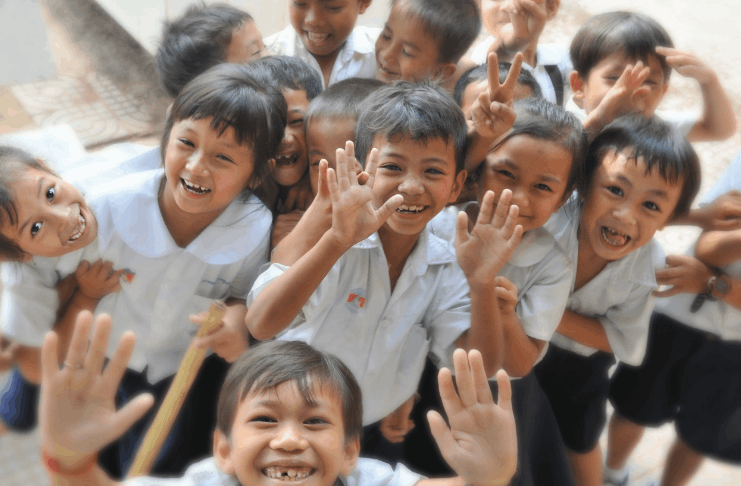In exploring the world’s most unique schools, this article unveils educational models that break traditional norms. It highlights institutions where innovative teaching methods and unconventional environments redefine learning.
The purpose is to showcase how these schools challenge the status quo and offer diverse educational experiences. By understanding these unique approaches, we can appreciate the vast potential of alternative education.
Understanding Unconventional Schools
Defining unconventional schools is about recognizing institutions that diverge from traditional educational models. These schools, often termed innovative or alternative, offer unique learning experiences shaped by their distinct environments and teaching methods.
Their significance lies in providing diverse educational approaches, catering to varied student needs and interests. By stepping away from the conventional, these schools challenge educational norms and expand the boundaries of learning.
They underscore the importance of adaptability and creativity in education. The impact of these schools goes beyond academics, influencing personal development and life skills.
Global Spectrum of Innovative Schools
Exploring schools around the globe reveals a vast array of educational diversity. This section delves into some remarkable examples, each distinct in its approach and setting.
Underground Learning: Abo Elementary School
Abo Elementary School in New Mexico offers a unique educational setting: it’s an underground facility designed initially for nuclear fallout. This distinctive environment provides a historical context, turning the school into a living lesson in Cold War history.
The design and location offer a distinct perspective on safety and survival, integrating these themes into its curriculum. Despite its unconventional setting, it focuses on standard educational goals while enhancing students’ awareness of history and safety.
This blend of traditional learning with unique historical insights makes Abo a notable example of adaptive reuse in education. It demonstrates how the physical environment can enrich the educational experience.
Witch School: Salem’s Online Portal
Witch School in Salem stands out for its focus on Wiccan and pagan studies, offered through an online platform. It caters to a niche community interested in esoteric and spiritual education, providing accessibility worldwide.
This school challenges the conventional curriculum by delving into ancient traditions and beliefs, offering a blend of history, religion, and cultural studies. Its online format breaks geographical barriers, allowing diverse students to engage in this unique learning experience.
Witch School exemplifies the potential of digital platforms in offering specialized and inclusive education. It underscores the role of technology in expanding the educational landscape.
Education on the Move: Train Platform Schools
The Train Platform Schools in India represent a revolutionary approach to education, targeting underprivileged children. Set on busy train platforms, these schools bring education to the doorstep of marginalized people.
This model highlights the importance of accessibility in education, addressing socio-economic barriers. The dynamic and challenging environment of a train platform offers real-world learning, fostering student adaptability and resilience.
These schools emphasize the vital role of education in social upliftment. Train Platform Schools showcase innovative solutions to educational disparities by adapting to unconventional spaces.
Digital Evolution: Steve Jobs School
It epitomizes modern educational innovation, focusing on digital learning and personalized education plans. It leverages technology to tailor learning experiences to individual student needs, fostering a sense of autonomy and self-directed learning.
The curriculum is flexible and dynamic, adapting to the evolving digital landscape. This approach prepares students for a future where digital proficiency is crucial.
The school’s philosophy revolves around preparing students for a world where critical thinking and digital skills are paramount. It serves as a model for integrating technology into education, emphasizing the importance of preparing for the future.
Cave Classroom: Gulu Elementary
Carved into a mountain cave, Gulu Elementary in China presents an extraordinary educational setting. This cave school symbolizes resilience and the desire to learn in challenging circumstances.
Its unique location offers a natural learning environment, blending education with environmental awareness. Despite limited resources, the school provides primary education to its students, highlighting the fundamental right to education.
This setup inspires creativity and resourcefulness, both in teaching and learning. It is a testament to the power of community and determination to overcome obstacles to education. It showcases how unconventional spaces can be transformed into centers of learning.
Innovative Teaching Methods
Educational methods are evolving, with schools adopting varied approaches. This section explores how these methods impact learning.
Hands-On Learning: Application in Education
Schools emphasize practical skills focused on real-world applications. They integrate hands-on experiences, connecting classroom theory with actual practice.
This approach enhances understanding and retention as students apply what they learn in tangible ways. It prepares them for real-life challenges, fostering problem-solving skills.
Such schools often collaborate with industries and communities, providing students with exposure to professional environments. This method bridges the gap between education and the workforce, emphasizing practical relevance.
Nature as a Classroom: Environmental Learning
Schools utilizing nature as a learning environment offer a unique approach to education. They use natural settings to teach students ecology, sustainability, and biology.
This immersion in nature fosters a deep connection with the environment, instilling environmental stewardship in students. Outdoor activities enhance physical health and encourage experiential learning.
Such schools often emphasize holistic development, integrating emotional and social learning with academics. They show how education can extend beyond traditional classrooms, embracing the outdoors as an educator.
Tech-Forward Schools: Embracing Digital Tools
Technology-driven schools integrate advanced tech into their curricula. They utilize digital tools to provide interactive and personalized learning experiences.
This approach keeps students engaged and caters to individual learning styles. It prepares students for a digitally connected world, teaching them essential tech skills.
These schools often feature innovative learning environments like virtual reality or coding workshops. They demonstrate how technology can transform education, making it more dynamic and relevant.
Diverse Educational Experiences
This section examines how unique learning environments shape student experiences. It highlights the diverse outcomes of alternative education.
Impact of Unique Learning Environments
Schools with unique environments shape students in distinct ways. They provide a broad range of skills and knowledge tailored to their specific settings.
Students in these schools often exhibit increased creativity, adaptability, and problem-solving abilities. They gain a deep understanding of how classroom lessons apply to real-world scenarios.
These environments encourage a love for lifelong learning, fostering curiosity and independence. They show that education can be tailored to various contexts, providing rich and diverse experiences.
Voices from the Classroom: Student Insights
Hearing directly from students in unique schools provides valuable insights. They often express enhanced engagement and motivation in their learning journeys.
Students describe how these environments foster a sense of community and belonging. They report gaining practical skills and real-world knowledge, not just academic learning.
Many students highlight the importance of adaptability and resilience, skills they acquire in these settings. Their perspectives underscore the impact of innovative education on personal and academic growth, revealing the power of student experiences.
Overcoming Challenges, Seizing Opportunities
While unique schools offer novel experiences, they face specific challenges and opportunities. This section delves into these aspects.
Ensuring Access and Embracing Diversity
Accessibility remains a challenge for many unique schools. They often struggle with reaching a diverse student population limited either by location or resources.
Despite these challenges, such schools strive to be inclusive, offering scholarships or alternative access methods. They demonstrate the importance of educational equity, making quality education available to varied demographics.
These schools also celebrate cultural diversity, integrating it into their curricula. They highlight the need for education systems to be more inclusive and accessible.
Pushing Educational Boundaries
Unique schools are at the forefront of educational innovation. They challenge traditional teaching methods and experiment with new approaches.
These schools serve as testing grounds for educational theories and practices. Their success stories inspire mainstream education to adopt innovative methods.
They highlight the importance of evolving education to meet contemporary needs. These schools show that pushing boundaries can lead to significant educational advancements, benefiting society.
Final Thoughts on Diverse Education
Exploring the world’s most unique schools reveals the vast potential and diversity in educational models. These institutions demonstrate that learning can transcend traditional boundaries, embracing innovation and creativity.
By adapting to various environments and student needs, they offer valuable insights into the future of education. This journey underscores the importance of fostering diverse, inclusive, and dynamic learning experiences for students worldwide.












